… How the Iyengar method evolve
I knew I should present yoga in such a way that even people who had done it before would know they were hearing something new for the first time. That made me revolutionize the subject. The idea struck me in 1937, but did not fructify for several years
ب.ک.س.آینگار در باره شکلگیری سبک آینگار یوگا میگوید:
میدانستم باید یوگا را طوری معرفی کنم که حتی کسانی که قبلا یوگا انجام دادهاند نیز احساس کنند برای اولين بار مطلب جدیدی را میشنوند این نکته باعث شد موضوع را متحول کنم. این ایده در سال ۱۹۳۷ به ذهنم خطور کرد اما سالها بی ثمر ماند.
In 1944, I began clues from my hard work, realizing the normal way Asana should be done this way rather than that way. I started realizing the importance of linking external actions with the inner body, the mercurial mind, and the sharp intelligence. My inward journey began there. Then I tried to find the correct way to work in each and every Asana.
در سال ۱۹۴۴ شروع به شواهدی از سختکوشی کردم و روش عادی انجام آسانا را تشخیص دادم. شروع به درک اهمیت ارتباط بین اعمال بیرونی و کالبد درونی کردم. سفر درونی من از آنجا آغاز شد. سپس تلاش کردم روش صحیح انجام هر آسانا را پیدا کنم.
Between 1937 and 1944, my teaching was completely was immature. The advantage was that was young. Vanity was it the pupils and in me. If had to prove my superiority, naturally I had to express my Vanity more.
آنجه بین سالهای ۱۹۳۷ تا ۱۹۴۴ تدریس کرده بودم کاملا خام بود. مزیتش این بود که جوان بودم. هم من و هم شاگردانم مغرور بودیم. اگر میخواستم برتری خود را ثابت کنم بطور طبیعی باید غرور خود را بیشتر بیان میکردم.
The only way I could do this way though my practice of yoga. I could see that my own pupils were doing better than me, and that gave me a clue that if they could to well, I should do better. I was always thinking ahead of them, looking for clues from the best of the class.l used to look at each limb separately.
تنها راه این کار از طریق تمرینات خودم بود. میتوانستم ببینم شاگردانم بهتر از من تمرینات را انجام میدهند و این وضعیت به میگفت باید تمرینات را بهتر انجام دهم. همیشه به آنها فکر میکردم و به دنبال شواهدی از بهترینهای کلاس بودم. هر عضوی از بدن را جداگانه مشاهده میکردم.
Props of yoga
ابزار یوگا
I first used a prop in 1948 when I was not getting Buddha Konasana at all, I started using bricks, the heavy stones which were available in the street. But the idea to use props on a large scale and systematically really struck in 1975, when the institute came into existence, and I was planning what to put into it.
در سال ۱۹۴۸ هنگامی که نمیتوانستم باداکون آسانا را انجام دهم از ابزار کمکی استفاده میکردم. شروع به استفاده از آجر کردم. سنگهای سنگینی که در خیابان پیدا میشد. اما ایده استفاده گسترده و ساختار یافته از ابزار را سال ۱۹۷۵ به ذهنم خطور کرد. هنگامی که موسسهام شروع به کار کرد و برای آن برنامه ریزی میکردم.
Alignment
همترازی
It wasn’t until then that the idea struck me that alignment is the most important thing. Yoga is alignment. This word was there theoretically, but no one explained what is meant. Almost all were saying that Asana are only physical and have nothing to do with the spiritual… I began to look at photographs of people, drawing lines between their way and my way of doing it, chest to chest, hand to hand, elbow to elbow.
زمانی ایده استفاده از ابزار به ذهنم خطور کرد که فهمیدم همترازی مهمترین نکته در یوگا است. این نکته به صورت نظری وجود داشت ولی کسی معنی آن را توضیح نداده بود. همیشه میگفتند آساناها بر روی جسم کار میکنند و کاری با روح و روان ندارند. شروع به تماشای تصاویر دیگران کردم و بین روش انجام آنها و خودم خطوطی را ترسیم میکردم. سینه به سینه، دست به دست، آرنج به آرنج.

The Asana were performed, but the position of the body was not aligned. In head balance, the head was in one place and one leg was straight and the other leg was turning. I wondered why there was this difference. Where was that alignment that yoga talks about when it says one has to be balance? Where was the equilibrium or balance – Samatvam?
آسانا انجام میشد اما موقعیت بدن همتراز نبود. در ایستادن روی سر، سر یک جا قرار داشت.، یک پا صاف بود و پای دیگر چرخیده بود. از این تفاوتها در شگفت بودم. همترازی که یوگا از آن صحبت میکند هنگامی که میگوید فرد باید متعادل کجا قرار دارد؟ تعادل کجاست؟
In order to know what alignment is, it is important to realize that the central portion of the body is the median plane in each and every part. If you take your finger and divide it down the middle, you get the median plane. When we stretch, are we in the median plane on either side, or are we overstretching from the median plane on one side and understreching on the other side?
برای شناخت همترازی باید تشخیص دهیم بخش میانی بدن صفحه میانی است که در هر بخش وجود دارد. اگر انگشت خود را از وسط خم کنید روی صفحه میانی این کار را انجام دادهاید. هنگامی که به بدن کشش میدهید آیا در هر دو سمت بدن در صفحه میانی قرار دارید یا یک طرف بدن را نسبت به صفحه میانی بیشتر کشش میدهید و سمت دیگر را تحت فشار قرار میدهید؟ اگر در جایی کشش بیش از حد وجود دارد در جای دیگری باید فشار وجود داشته باشد.
The median plane is thevgod: it is what brings you to the art of precision. From the outer part, inner part, front part and back part – you always have to measure how much you are extending from the median plane. There is no overstretch; you are balanced exactly in the middle.
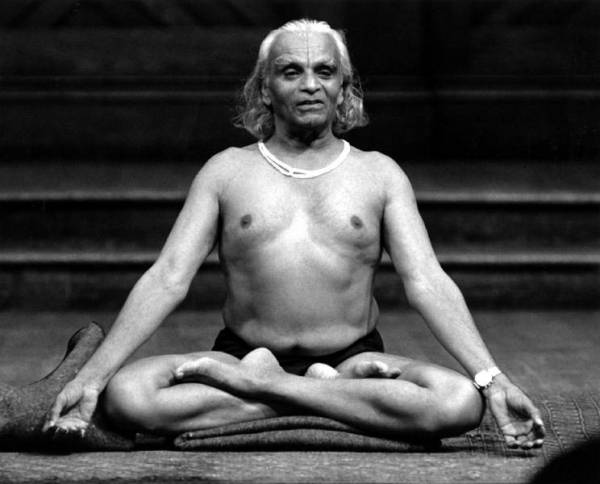
صفحه میانی راهنمای شما خواهد بود و شما را با هنر دقت آشنا خواهد کرد. از بخش بیرونی، بخش درونی، بخش پیشین و بخش پشت، همیشه باید اندازه بگیرید چقدر نسبت به صفحه میانی حرکت کردهاید. در میانه هیچ کشش بیش از حدی وجود ندارد و شما در تعادل قرار دارید.
Later, with the alignment of the skeleton – muscular body, I began to align my mind, intelligence, and consciousness, which made me look whiting. This new frame of study and observation made me engulf all instruments of the self and made the very self occupy the body – its frontiers – as Citta Prasadana and Atma Prasadan.
بعدها با این همترازی بدن اسکلتی- عضلانی، شروع به تراز کردن ذهن و آگاهیام کردم که مرا متوجه درون میکرد. این چهارچوب جدید مطالعه و مشاهده باعث شد تمام ابزارهای خویشتن را بشناسم و تمام بدنم را از خویشتن سرشار کنم.
YOGA WISDOM AND PRACTICE
BKS IYENGAR
حکمت و طریقت یوگا
ب.ک.س. آینگار
انتشارات چین
مترجم: فرهاد صدارت



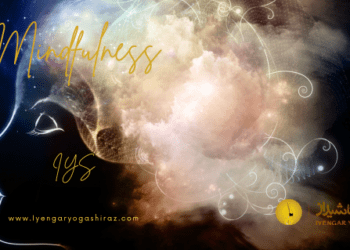

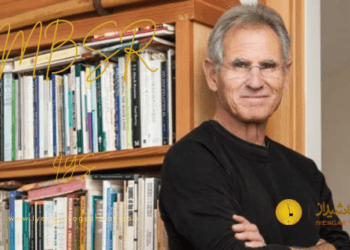
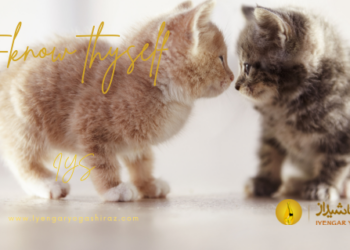
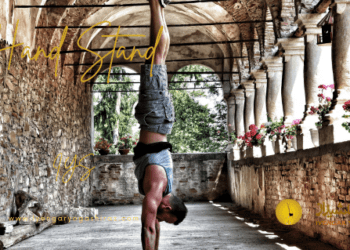




بسیار مفید، ممنون